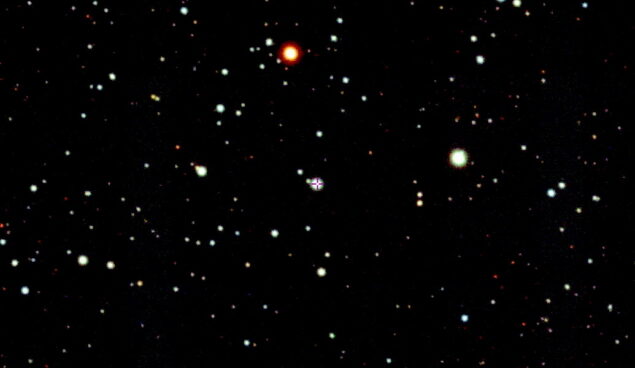
Astronomers predict that around half of all heavy atomic nuclei in the universe must have originated in a succession of rapid neutron captures, named the r-process. The sites where these captures take place are still poorly understood, but according to current theories, mergers between neutron stars are thought to play an important role. In the latest models of chemical evolution in galaxies, however, these mergers alone can't reproduce the abundances of heavy elements that we observe today.
To search for alternative origins, Yong's team looked to the halo of the Milky Way - which contains an abundance of ancient stars born early on in the galaxy's star-forming history. The astronomers made their observations using the European Southern Observatory's Very Large Telescope (VLT) in Chile, and the Australian National University's SkyMapper telescope in New South Wales, which has previously been used to identify thousands of these chemically primitive stars in the halo.
In a star named SMSS J200322.54−114203.3, Yong and colleagues noted a high abundance of r-process elements, including zinc, uranium, europium and possibly gold, despite it being extremely metal-poor compared with stars of similar ages. Through their analysis, the researchers concluded that these abundances could have only been produced in a colossal explosion named a magneto-rotational hypernova. These as-yet unobserved events are triggered as the core of a rapidly spinning, highly magnetized star, 25 times more massive than our Sun, collapses into a black hole - releasing 10 times more energy than a conventional supernova.
"It's an explosive death for the star," says Yong in a press statement. "We calculate that 13 billion-years ago J200322.54-114203.3 formed out of a chemical soup that contained the remains of this type of hypernova. No one's ever found this phenomenon before."
Such a dramatic explosion would provide ideal conditions for the r-process, producing an abundance of heavy elements. Alongside this process, the hypernovae would also eject high levels of lighter elements, formed during the progenitor star's evolution; as well as elements close to the "iron peak" in universal abundance, formed during explosive nuclear burning. As a result, although the remnants should be metal-poor overall, they should contain all stable elements of the periodic table at once.
Based on this evidence, Yong's team concluded that SMSS J200322.54−114203.3 is made up of the hypernova-ejected remnants of a short-lived, even more ancient star, which underwent a magneto-rotational hypernova just around one billion years after the Big Bang. Their discovery provides key evidence for an as-yet unconsidered site for the r-process, and could lead to better explanations for how heavy elements were first synthesized, early on in the galaxy's star-forming history.
The research is published in Nature.



Reader Comments
to our Newsletter